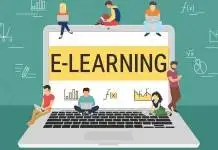Written by Sumeet Mehta, CEO and Co-Founder LEAD
Q. How is LEAD reshaping school education in India?
A. LEAD is on a mission to transform school education in India. Today, LEAD serves 3000+ schools across 400+ cities, and reaches 1.2 million plus students and 25k plus teachers.
As long as a school has teachers, students, a building and furniture, LEAD’s integrated school system provides everything else — software, hardware curriculum, books, a school kit, and training sessions. Their uniquely designed School EdTech system covers the entire breadth of schooling, from pre-primary through standard X.
LEAD enables Affordable Private Schools across India to seamlessly provide the highest quality education to children, even amid the pandemic. The learning system involves an integrated set of technological and learning solutions, which significantly strengthen the role of schools, teachers, and parents in advancing the overall growth and development of every child.

Q. How are LEAD’s offerings different from other major EdTech players?
A. Most other institutions are offering either piecemeal or peripheral digital solutions, whether it is in the area of higher education, tutorials or upskilling. Whereas LEAD is addressing the challenges at the core education level and transforming conventional schooling in India with its tech integrated solutions.
LEAD replaces the purely textbook-based ‘listen and repeat’ system with multimodal learning. Taking into account the fact that children learn in different ways – by seeing, doing or by listening, every classroom in a LEAD powered school comes equipped with a TV.
LEAD also replaces twice a year assessments that used results to label children as ‘good’ or ‘bad’ with multiple assessments throughout the year with ample opportunity for remediation built into the timetable.
Besides, it replaces gut feel based decision making with data-driven decision making. Today, LEAD collects over 2400 unique data points for every child. At a school level, that is 12 Lakh unique data points. With so much data and with the use of technology, LEAD can personalize learning for every child: something even many high fee schools struggle to do efficiently.
Q. Tell us about your growth so far in detail.
A. In 2012, LEAD was born in Areri, 35 km from Gujarat’s capital Ahmedabad, with just 14 students on day 1. In 2016, we opened four more schools in Kurduwadi, Akkalkot, Karmala and Mangaon. By 2017, LEAD had taken over four government schools, in addition to several other public schools and partner schools. Our ‘integrated system’ helped schools digitize the entire curriculum and provide solutions for every stakeholder — teachers, parents, students, and school owners.
Both Smita (Smita Deorah, Cofounder of LEAD) and I delved deep into the traditional education system. We realized that the lack of proficiency in English was one of the significant reasons for uncoordinated education. Hence, we decided to approach English as a skill instead of a language. With that, LEAD announced a revolutionary approach towards English learning – ELGA (English Language and General Awareness), signifying a massive change from age-based to a skill-based grouping of students.
In 2019, we reached a milestone of partnering with 500 schools across India. Later on, in 2020, LEAD raised $28 million in a Series C funding round led by WestBridge Capital along with existing investor Elevar Equity. Surpassing the Series C funding, LEAD raised $30 million in the Series D funding in 2021 by Global VC Fund GSV Ventures and WestBridge Capital.
Important Announcement – EasyShiksha has now started Online Internship Program “Ab India Sikhega Ghar Se”
Q. What is your vision for schools in India?
A. We want to transform the arc of education with superior technology solutions. The new normal – driven by School EdTech – is an opportunity for schools everywhere to recoup learning loss, infuse digital technology into pedagogy, revise curricula to maximize high-quality learning and become innovative in how we teach students. Schools can – and must – reimagine the classroom, transform schools into tech-based centers of excellence, make learning both engaging and exciting for children, and revolutionize the education system.
Q. What are the future plans for LEAD?
A. We aspire to reach 26 million students and 60,000 schools by 2026.
We want to fundamentally reimagine schooling for these schools through School Edtech and hence we are looking at making the back-end technology much more intelligent and modular.
Secondly, we are looking to deliver teacher delight so that she has more time to teach. LEAD will use AI & ML to automate homework checking which takes up 20% of a teacher’s time.
Lastly but most importantly, LEAD wants to enhance personalization, both for the teacher to build her skill and for the student – both by making the classroom instruction better and at home where we have a perfect match of what a student needs and what is delivered.

Q. What is the on-ground reality of schools and what is needed for us to deliver quality education in our schools?
A. Covid-19 has impacted school education, especially the delivery of quality education as well as classroom-based teaching and learning. It has become one of the major concerns for parents in India and around the world. Over 130 million students who go to Govt schools were deprived of any learning.
‘At School’ learning is core to education and critical to impact ‘Learning Outcomes’ of the 270 million students in the country. However, it is woefully underrepresented not only in terms of the attention given within EdTech but also in a lot of players/startups trying to solve the problem at ‘Ground Zero.’
Most of the investment today in the education sector is being prioritized to solve the secondary problem of ‘Supplemental Education.’ Schools must focus beyond academics in schools.
Q. Do you think schools will go back to their old ways once physical schooling starts completely?
A. While the learning losses across grades cannot be measured, it has allowed school owners, educators and teachers to transform education – not to the pre-Covid-19 days, but a post-pandemic new normal backed by a robust School Edtech. Schools have to integrate technology into every aspect of education, whether in the classroom or at home and give the students the best of blended learning.
In the new normal, schools will have to integrate technology not just with pedagogy and curricula but also routine administrative tasks, attendance management, extracurricular activities and PTA meetings.
Schools will have to broaden their vision to provide students with a holistic education and all-round development that goes beyond academic excellence.
Want to improve your skill visit: EasyShiksha































































